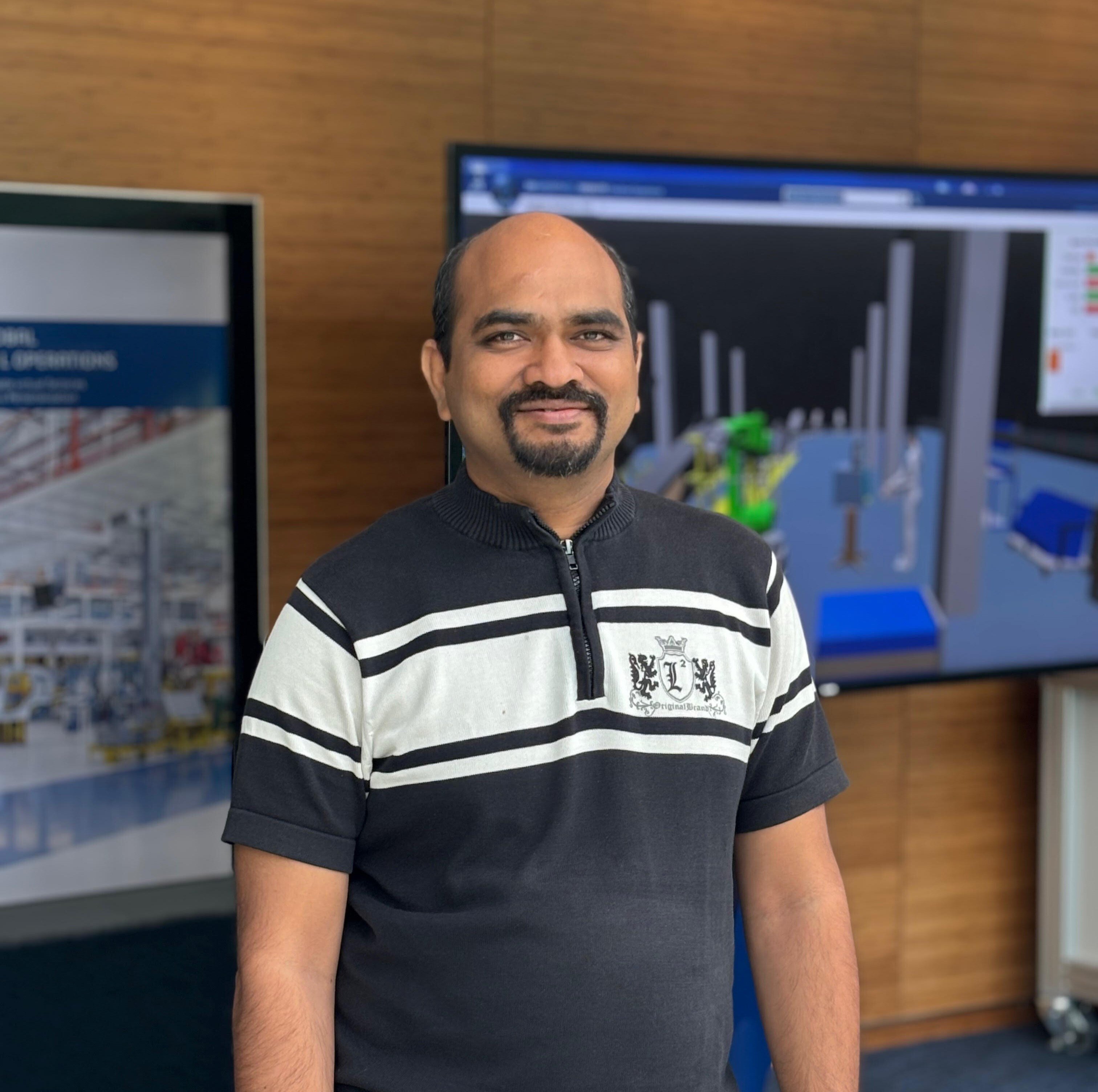From Discovery to Support: How TAMs Guide Customers at Spatial?
- Introduction
- Pre-Onboarding & Discovery Phase
- Understanding His Perspective
- Understanding the Onboarding Process
- Challenges and Solutions
- Collaboration and Communication
- Measuring Success
- About Spatial
About Hemant and His Role
-
Can you walk me through your career path?
I completed my mechanical engineering degree in Pune. During my engineering time itself I figured out my interest in CAD development. I joined Tata Chemicals as part of campus placements: maintenance, projects, purchasing, power plant operations, and special projects. After two years, I took a six-month CAD development course and joined Spatial in Pune. I started in the InterOp development team, working on reverse engineering and file format handling for 10 years, in between I did MS Software Systems from BITS Pilani while on the job. Later I moved to services to help integrate our SDKs into customer apps. After services, I became a TAM for the EMEA region, and here my goal was to help customers understand our technologies, evaluate them and integrate them into their applications.
- How would you describe your role and responsibilities within Spatial?
I have been a TAM for five years, I support new leads, understand their needs, and guide them through evaluating and integrating our technologies. My responsibilities include technical training, presentations, and applying industry knowledge to help customers adopt our SDKs.
- What does a typical day or week look like for you in your position?
My days include prospect calls to discuss needs, ongoing support for existing customers during development, and internal coordination with sales and regional managers. I also address integration issues and help customers prepare for product releases.
- What industries or types of clients do you mostly engage with in your role?
Most of our clients are in manufacturing, particularly CAM, sheet metal, metrology, and AR/VR, but we serve a wide range of industries.
- How do you prioritize between different customers, especially when handling multiple accounts with varying needs?
We work closely with account and regional managers to understand where we have to put in our energy, so we decide which account need to be given priority, and accordingly we handle the priorities.
Pre-Onboarding & Discovery Phase
- How do you approach a discovery call with a new lead?
We aim to gain a clear and comprehensive understanding of what the customer is currently doing, what they want to achieve, and the key pain points they’re facing. Once we have that clarity, we assess which Spatial technologies are best suited to address their challenges. We also take a long-term perspective to ensure the solution we propose will continue to deliver value over time.
- How do TAMs support the sales process and convince prospects to adopt Spatial solutions?
To support the sales team, our first responsibility as TAMs is to technically understand and clearly define the customer’s problem. We then identify how Spatial technologies can address those specific pain points. A crucial part of the TAM's role is also to build strong relationships with the prospect’s technical stakeholders, creating the trust necessary for open and effective collaboration.
- How do you use SDKs to demonstrate the value of Spatial’s solutions during pre-sales?
We often leverage proof of concepts (POCs) that were developed for previous engagements or create new POC to demonstrate our capabilities to new customers. In addition, we have ready-to-use samples that showcase the types of data and information we can extract from various formats. We also use a demo tool called 3D Script, which enables rapid prototyping. With it, we can visually demonstrate how our technologies can solve complex geometrical challenges.
- How do you track and assess a potential customer's engagement before onboarding?
When the customer enters the evaluation phase, we begin by providing training to help them understand how to use our SDKs. We then set up regular meetings, typically weekly, to track their progress and provide support. In addition, we hold ad hoc meetings whenever the customer encounters a blocker or needs immediate assistance. Together, we define an evaluation plan outlining what they will test and when. At the end of the evaluation period, we review the key criteria they aimed to validate and assess what has been successfully achieved.
-1.jpeg?width=501&height=576&name=1741184120585%20(1)-1.jpeg)
Hemant Meeting Cadwork informatik team
Understanding His Perspective
- What’s the most fulfilling part of your job when it comes to working with customers? How do you define success in your role?
The most fulfilling part of my role is working with customers from diverse backgrounds and industries. Learning customers problems and tackle them alongside with the customer gives pure joy. Sometimes its like customer has problem that we have already a solution and sometimes we strive hard to find solutions and need to think out of the box to get there. This gives real job satisfaction.
- How do you define success in your role?
In general, I define success as our ability to clearly demonstrate the full potential of our SDKs to the customer. It's also about convincing them that our solutions are the right fit to solve their specific challenges. These two elements are at the core of what I consider successful. And of course, building a strong rapport with the customer is equally important—it’s what enables long-term collaboration and trust.
- What do you think is the most critical skill for excelling in your role?
The most critical skill in this role is the ability to truly listen and understand. Customers often have complex problems with a lot of background, but they usually try to explain everything in just a few minutes. It’s essential to listen carefully, grasp the full context, and then craft a thoughtful, effective solution tailored to their needs.
- What do you find to be the biggest challenge in managing client relationships & how do you navigate it?
Maintaining regular contact is essential. I use emails, calls, and meetings to follow up on issues and understand customers’ evolving needs.
Understanding the Onboarding Process
- Can you describe the typical steps you follow to onboard a new customer? Do you follow a standardized onboarding workflow, or is it tailored to each customer?
The onboarding process can vary depending on the nature of the engagement. For simple deals, it’s usually straightforward, the customer begins integrating the SDKs, releases their application, and accesses our support as needed. However, when multiple SDKs are involved, integration becomes more complex. In those cases, we maintain regular contact through weekly or bi-weekly calls to track progress and provide guidance on how to best integrate our technologies into their application. Throughout this period, they also remain connected to our support system for additional assistance.
- What key objectives do you aim to achieve during the onboarding process?
The key objective during onboarding is to ensure the customer feels confident and supported. Since they’re starting a new development project, they’ll need a lot of information and guidance. Our role is to be readily available, point them in the right direction, and make sure they’re fully aware of how to access our support system—so they know exactly how to raise any issues that may arise.
- What are some best practices you’ve developed for ensuring a smooth onboarding experience?
Understanding whether a customer is starting fresh or replacing an existing solution is key. We manage expectations accordingly and offer proactive guidance.
Challenges and Solutions
- What are the most common challenges customers face from evaluation, onboarding and support phases?
Most of the time, challenges during the evaluation phase are well managed, and customers rarely face major issues at that stage. The real challenge consistently lies in the integration of our SDKs into their applications. As the customer is now looking at wide spectrum of things to do in shortest possible time, we provide extra attention to them. Each customer operates in a different development environment, so there’s no universal approach, every integration is unique and must be adapted accordingly but in the end we solve the issues.
As for the support phase, one key aspect is helping customers understand that not every issue is equally critical. Part of our role is to work with customer to identify which issues are truly critical from a business standpoint, and prioritize those accordingly.
- How do you help developers integrate and use Spatial SDKs effectively?
We provide training, guide them through workflows, and use our experience to show how to use the SDK.
- Can you share an example where a customer struggled with onboarding or adoption and how you helped them overcome it?
Some customers experience performance issues, which are often due to incorrect API usage or suboptimal workflows. In such cases, we analyze their implementation and guide them in adjusting the workflow to improve performance. Sometimes, the issues stem from using incorrect import/export options—so we help them configure the settings properly to ensure accurate results.
Collaboration and Communication
- How do you collaborate with other teams (e.g., sales, product, support) during onboarding?
Collaboration is always a continuous process. We don’t wait until onboarding starts to involve other teams. As soon as an opportunity arises, we begin coordinating with the sales team. Sales is involved from the beginning, and Product Management typically gets involved during both the evaluation and development phases. Support usually comes in later—after the customer has signed and is close to releasing their product. Up to that point, we, as TAMs, handle most of the support-related incidents directly.
- How do you ensure customers stay engaged and get all the information they need?
We tailor meeting frequency to their roadmap and needs. We maintain regular contact through calls and occasional on-site visits.

Hemant Meeting MegaCAD team
Measuring Success
- What metrics or KPIs do you use to evaluate the success of onboarding?
When the customer achieves their success criteria then we are successful otherwise not.
- How do you identify when a customer has been successfully onboarded?
When the customer releases their product without major issues and meets their criteria, that’s successful onboarding.
- Do you track customer satisfaction during and after onboarding? If so, how?
We track satisfaction through ongoing interactions rather than formal surveys. If there are no issues, we reduce check-ins but remain available. We occasionally do follow-up check-ins, depending on the customer’s situation. For example, if the customer is only using our SDK for a simple interoperability release and everything works as expected, there’s often no need for ongoing involvement. However, for more complex or modular use cases, things can evolve after the product release. In such cases, if new issues arise, we step back in to help troubleshoot and resolve them.
About Spatial Corp
Spatial Corp, a Dassault Systèmes subsidiary, is the leading provider of 3D software development toolkits for technical applications across a broad range of industries. Spatial 3D modeling, 3D visualization, and CAD translation software development toolkits help application developers deliver market-leading products, maintain focus on core competencies, and reduce time-to-market. For over 35 years, Spatial’s 3D software development toolkits have been adopted by many of the world’s most recognized software developers, manufacturers, research institutes, and universities. Headquartered in Broomfield, Colorado, Spatial has offices in the USA, France, Germany, Japan, China, and the United Kingdom. For more information on Spatial’s latest updates and product offerings, please visit www.spatial.com.




